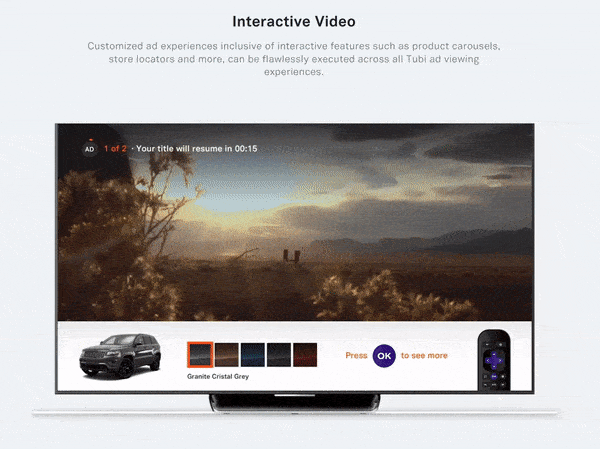Ok, this might get me killed by the secret advertising police, if they existed — or at least some nasty comments and slander. The advertising supply chain—what a dumpster fire. It’s like someone took the worst parts of a sketchy pawn shop and a DMV waiting line and mashed them together.
You’ve got layers upon layers of middlemen, each one more useless than the last, all feeding off the same carcass of inefficiency and greed. And the sad part?
The folks who are supposed to be the gatekeepers—yes, you, media buyers—are too scared to rock the boat.
So instead, they shuffle papers, collect their paychecks, and pretend the whole mess isn’t about to implode.
The Bloat of the Supply Chain: A Modern-Day Horror Story
Let’s talk about this monstrosity of a supply chain. Once upon a time, programmatic advertising was supposed to be the future—the streamlined, automated process that would make ad buying faster, cheaper, and more effective. Instead, it’s turned into a Frankenstein’s monster of inefficiency. We’ve got so many players involved that it’s like trying to untangle a plate of spaghetti with a pair of chopsticks. Every SSP, DSP, and TLA (Three-Letter Acronym) in the book wants a piece of the action, but all they’re really doing is selling you the same tired inventory over and over.
It’s the ad industry’s version of Groundhog Day, and we’re all stuck in the loop.
And let’s not kid ourselves—most of what’s being sold as ‘premium’ inventory is about as premium as a gas station sushi. It’s the digital equivalent of selling knock-off handbags on a street corner. You’ve got ads showing up on made-for-advertising sites that no one actually visits, buried in non-viewable placements, or spread across supply chains so convoluted you need a map and a compass just to figure out where your ad is showing up. And the worst part? The people in charge of buying this crap are too lazy or too terrified to do anything about it.

The Emperor Has No Clothes: The Big Lie of Transparency
Let’s start with the fairy tale everyone in the advertising world seems to love—the myth of transparency. It’s right up there with Santa Claus and the Tooth Fairy, only less believable. Sure, everyone talks a good game about transparency, as if just saying the word enough times will somehow make it true. But let’s be real: transparency in the advertising supply chain is about as real as a unicorn sipping a latte at Starbucks. When it comes down to it, no one actually knows where their ads are going, who’s seeing them, or if anyone’s even paying attention. The whole thing’s like playing darts blindfolded in a pitch-black room—sure, you might hit something eventually, but you’re just as likely to end up with a dart in your foot.
But the real kicker? Everyone in the industry knows this. It’s the dirty little secret that everyone’s too scared to say out loud, because once you pull at that thread, the whole thing unravels. The moment you start asking questions, like “Where exactly did my ad dollars go?” or “Why are we paying top dollar for inventory that might as well be invisible?” you’re venturing into dangerous territory. And nobody likes dangerous territory—not when it threatens the cozy status quo that’s been lining pockets for years. So, what do the media buyers do? They pretend it’s all fine, nod along in meetings, and hope no one notices the emperor is buck naked.
Let’s talk about fear—because that’s what’s really driving this trainwreck. Media buyers are terrified of pulling back the curtain and admitting the truth: they’ve been complicit in this mess from the get-go. It’s like that scene in every horror movie where the character knows something’s wrong but decides to go into the creepy basement anyway. Why? Because facing the truth is scarier than whatever might be lurking in the dark. Admitting that the supply chain is broken would mean taking on the big players—the ones with deep pockets and even deeper connections—and that’s a battle most buyers just aren’t willing to fight. After all, who wants to be the one to say that the emperor has no clothes when everyone else is still pretending to admire his fine robes?

And let’s not forget about the money—because, at the end of the day, that’s what this is all about. The current system, as broken as it is, keeps the cash flowing. It’s a gravy train with biscuit wheels, and nobody wants to be the one to derail it. So, instead of fixing the problem, media buyers keep their heads down, cross their fingers, and keep throwing money into the fire. It’s the ultimate in willful ignorance—pretend the problem doesn’t exist, and maybe it’ll go away. Spoiler alert: it won’t.
What’s truly mind-boggling is the sheer level of denial. It’s like watching a slow-motion car crash where everyone’s too busy texting to notice the impending doom. The industry keeps talking about transparency like it’s some magical cure-all, but in reality, it’s just a buzzword that gets tossed around to make everyone feel better. Meanwhile, the same old games are being played, the same old problems are being ignored, and the same old money is being wasted. It’s a vicious cycle, and the only way out is to stop pretending that everything’s fine and start demanding real change.
Audience Curation: The Marie Kondo of Advertising
But there is a way out of this mess, and it’s called Audience Curation. Think of it as Marie Kondo for the advertising world—only instead of decluttering your closet, you’re decluttering your ad strategy. Curation is all about stripping away the layers of crap that have built up over the years and focusing on what really matters: reaching the right people with the right message at the right time.
When you curate your audience, you’re not just playing a numbers game—you’re making sure your ads are seen by people who actually care about what you’re selling. It’s like switching from a shotgun to a sniper rifle. You’re not just spraying and praying—you’re taking careful aim and hitting the target every time. By focusing on real-time data and dynamically updating your targeting, you’re not just improving efficiency—you’re unlocking new opportunities. You’re finding those hidden gems of audience segments that everyone else is missing, and you’re turning them into brand advocates.
The Benefits: Less Crap, More Connection
The beauty of audience curation is that it’s not just about saving money—it’s about building real connections with consumers. When your ads are relevant and aligned with the interests of your audience, people notice. They engage. They convert. And that’s not just good for your bottom line—it’s good for your brand.
But here’s the kicker: curation also future-proofs your strategy. The ad industry is changing faster than a TikTok trend, and if you’re not staying ahead of the curve, you’re going to get left behind. By embracing curation, you’re giving yourself the flexibility to adapt to whatever comes next, whether that’s new technology, new consumer behaviors, or new industry regulations.

The advertising supply chain is a disaster, and everyone knows it. But instead of sitting around waiting for someone else to clean up the mess, it’s time to take action. Embrace audience curation, cut through the clutter, and start delivering ads that actually make a difference. Because if you don’t, you’re not just wasting money—you’re wasting your time. And in this business, time is the one thing you can’t afford to lose.
Pesach “Pace” Lattin is one of the top experts in interactive advertising, affiliate marketing. Pesach Lattin is known for his dedication to ethics in marketing, and focus on compliance and fraud in the industry, and has written numerous articles for publications from Media Post, ClickZ, ADOTAS and his own blogs.
Discover more from Rathergood TV
Subscribe to get the latest posts sent to your email.

